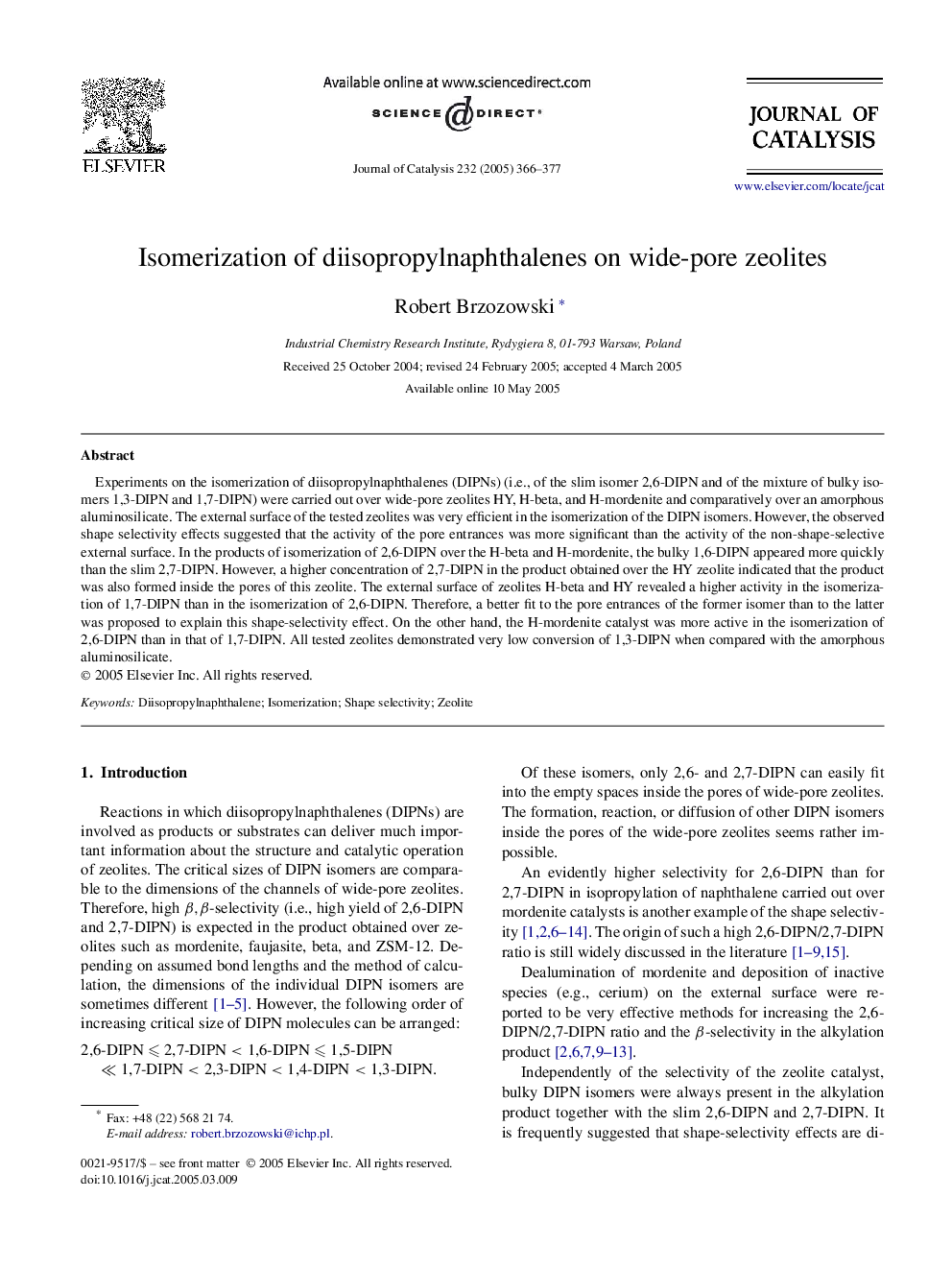| Article ID | Journal | Published Year | Pages | File Type |
|---|---|---|---|---|
| 10244413 | Journal of Catalysis | 2005 | 12 Pages |
Abstract
Experiments on the isomerization of diisopropylnaphthalenes (DIPNs) (i.e., of the slim isomer 2,6-DIPN and of the mixture of bulky isomers 1,3-DIPN and 1,7-DIPN) were carried out over wide-pore zeolites HY, H-beta, and H-mordenite and comparatively over an amorphous aluminosilicate. The external surface of the tested zeolites was very efficient in the isomerization of the DIPN isomers. However, the observed shape selectivity effects suggested that the activity of the pore entrances was more significant than the activity of the non-shape-selective external surface. In the products of isomerization of 2,6-DIPN over the H-beta and H-mordenite, the bulky 1,6-DIPN appeared more quickly than the slim 2,7-DIPN. However, a higher concentration of 2,7-DIPN in the product obtained over the HY zeolite indicated that the product was also formed inside the pores of this zeolite. The external surface of zeolites H-beta and HY revealed a higher activity in the isomerization of 1,7-DIPN than in the isomerization of 2,6-DIPN. Therefore, a better fit to the pore entrances of the former isomer than to the latter was proposed to explain this shape-selectivity effect. On the other hand, the H-mordenite catalyst was more active in the isomerization of 2,6-DIPN than in that of 1,7-DIPN. All tested zeolites demonstrated very low conversion of 1,3-DIPN when compared with the amorphous aluminosilicate.
Related Topics
Physical Sciences and Engineering
Chemical Engineering
Catalysis
Authors
Robert Brzozowski,
